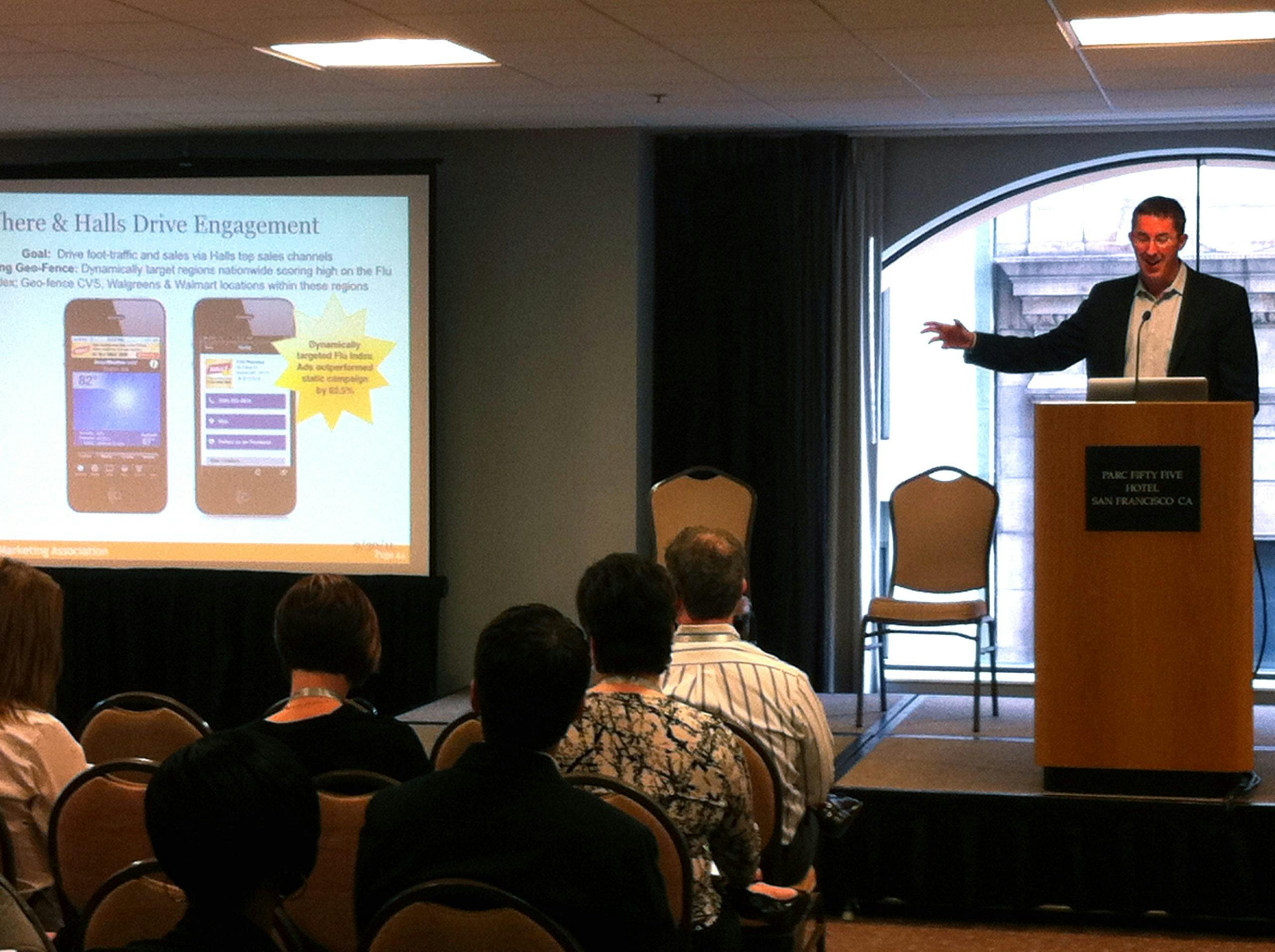At the Mobile Recruiting Camp conference today in San Francisco, the Mobile Marketing Association’s North America Managing Director, Michael Becker opened up the conference asking the question: “How are you going to reach customers through this new medium?” While mobile devices are not new (the first cellular phone call was placed April 3, 1973 by Martin Cooper, then General Manager of Motorola’s Communications Systems Division) in recent years the advancement of mobile technology and the use of mobile marketing campaigns to reach people on their handheld devices has grown by leaps and bounds. 70% of people own feature phones today to 30% who own smart phones — but the smart phone number is growing quickly. Today, there is more technology in a typical smart phone than there was in the entire Apollo 11 moon launch.
When it comes to sourcing, it’s become more apparent to many people in recent years that sourcing and marketing have a lot of similarities. Not the least of which is the struggle to somehow merge the traditional (read “old school”) approach to the new (read “digital”) approach to reaching people — whether they are customers or candidates.
 Becker showed an image of the mighty Amazon River — which is created when the “white” Solimoes River meets the “black” Rio Negro. It is one of the coolest natural occurrences because for several miles the two do not mix due to their densities being so different. This is an interesting way to illustrate traditional marketing approaches merging with digital marketing — it takes awhile because there are stark differences in the two, but eventually they come together, and Becker says that mobile will be what helps this process along.
Becker showed an image of the mighty Amazon River — which is created when the “white” Solimoes River meets the “black” Rio Negro. It is one of the coolest natural occurrences because for several miles the two do not mix due to their densities being so different. This is an interesting way to illustrate traditional marketing approaches merging with digital marketing — it takes awhile because there are stark differences in the two, but eventually they come together, and Becker says that mobile will be what helps this process along.
For sourcing, digital or “social recruiting” has been a hot trend recently. Digital and traditional sourcing, or “smile-and-dial” and/or offline lead generation, often seem to butt heads — but the two are necessary parts of the full sourcing process if companies are to find the best candidates for opportunities. And here again, mobile approaches can be the connecting device (in both senses) to bring the two together in harmony.
Part of how to approach this is learning about your target audience — which is a typical first-step marketing approach. In a panel later in the morning, Joel Cheesman shared that lots of people conduct job search on their mobile devices while at work so they don’t “get caught.” Mobile breaks the corporate firewall for what websites are visited during working hours. This is important information for sourcers to consider — this is a relatively new (and growing) method with which to reach target audiences, particularly those who may actively be seeking out your opportunities.
A few tips that Becker left attendees with regarding reaching their target audience and developing mobile marketing (sourcing) campaigns:
50% business is engaged through mobile channels.
This is a big deal — if you do not have a mobile presence, you are potentially missing half of your target audience. Mobile channels include mobile-optimized websites, SMS, mobile marketing campaigns, and social networking communication tools that will push to mobile devices.
Mobile is the “now” media.
Mobile is an individual’s media — it allows for customization of experience for users. By putting the consumer (or employee, or candidate) first and giving them a unique experience, from a sourcing standpoint your job will be easier. The potential first impression will be remembered fondly and even if that person is not currently looking for new opportunities, they will remember their experience down the road, or even recommend friends and colleagues they know who are currently looking. First impressions are huge.
Prepare and create a mobile presence for your website if you’re going to do mobile marketing.
If you are using mobile campaigns to reach prospects — it is imperative that you have a mobile-optimized website. Additionally, Becker mentioned that Google is going to start giving higher indexing to websites with mobile optimization. There is never a better time to jump on the mobile bandwagon.
Focus on metrics — it’s one of the easiest media to measure.
Particularly with sourcing, it is important to know your metrics. In order to reach your target audience, you need to know who they are and what they’re about. Since mobile marketing is opt-in, there are more opportunities to collect more information on the people who have elected to participate in your campaign. As sourcers, our job is to know what to do with this information. In fact, that’s what separates a good sourcer from a great sourcer — anyone can collect data, but it takes a great sourcer to know how to use it to attract the best talent.
Innovate, be creative, and be disruptive.
Sometimes, it’s hard to do this — particularly if you are bound by strict corporate policy. But with the amount of free resources available in the mobile space, it shouldn’t be too hard to experiment! As sourcers, we are creative souls and should be at the forefront of trying new avenues of reaching our audiences. Suggest using mobile gaming in addition to more accepted approaches of SMS or a mobile app to appeal to your audience — if it suits who you’re after. If you can develop a compelling business case to try new methods of reaching people, the sky’s the limit. But that’s a whole different topic…
Always learn.
“Once you stop learning you start dying.” Albert Einstein
One of the things I love most about the business of sourcing is that the people who pursue this career path are always hungry for knowledge. Knowing that target audiences are dynamic and not static, mobile marketing (…sourcing) is a natural choice for reaching people on the go. Having a better understanding of devices and applications that will help connect you with those individuals will keep you ahead of the curve of your competitors. And that’s what will land you the best talent in the long run.
Remember: marketing and sourcing are similar, and the first approach to marketing is understanding your target audience. Only after you do that should you pursue technology selection. But considering what we know about mobile acceptance today, you can rest assured that mobile has a great future in the evolution of the sourcing function.
